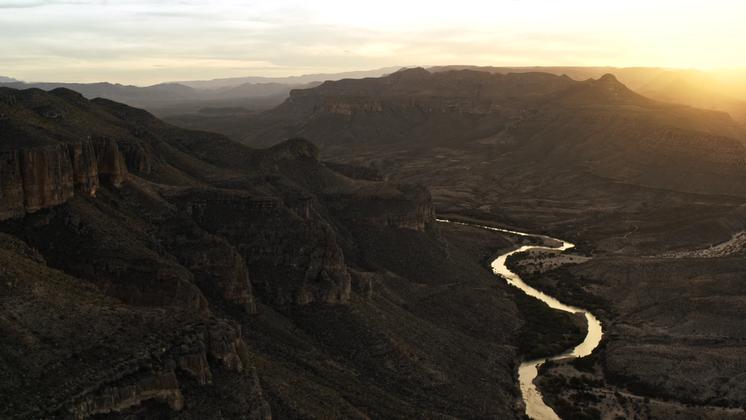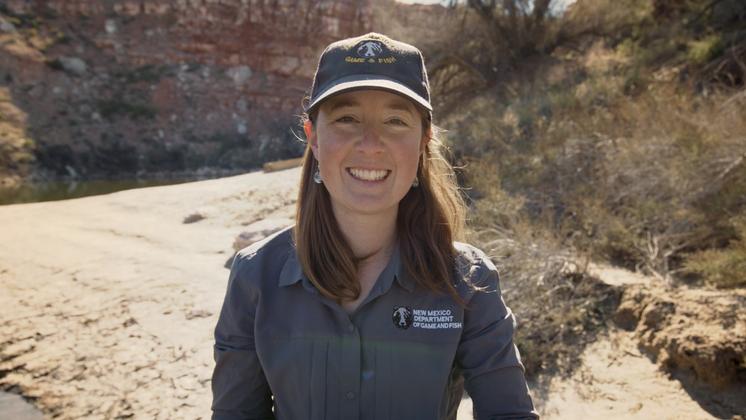
Coalition Supports Habitat in the Pecos River Watershed
The National Fish and Wildlife Foundation (NFWF), the U.S.D.A.’s Natural Resources Conservation Service (NRCS), and a coalition of seven oil and gas corporations have announced a number of early successes resulting from investments in fish and wildlife and their habitats in the Pecos River watershed, which in large part overlays the energy resource-rich Permian Basin. Marathon Oil is very proud to be part of this important coalition.
To learn more about the objectives and early successes of the PWCI, watch the video
The Pecos Watershed Conservation Initiative (PWCI) has two primary focuses: restoring Chihuahuan Desert grasslands to benefit migratory grassland birds and pronghorn, and improving aquatic habitats for native desert fish and the Texas hornshell mussel. Since the initiative’s inception in fall 2017, the group has worked to identify and fund critical habitat and species conservation work in this unique desert landscape, where cattle ranching and oil and gas production coexist with many species found nowhere else.
“In its first years, the Pecos Watershed Conservation Initiative is delivering significant outcomes on the ground and providing new information on wildlife in the Permian Basin, which will benefit native species and local communities for many years to come,” said Jeff Trandahl, executive director and CEO of NFWF.
To date, 12 projects totaling more than $3 million have been funded. When complete, they will result in restoration or enhancement of more than 9,000 acres of grasslands, protection or establishment of two populations of endangered or threatened desert fish, and intensive monitoring of a suite of native species whose habitats and behavior were previously poorly understood.

Chihuahuan Desert
“In the Permian Basin, energy development has grown tremendously,” said Russell Martin, Jr., wildlife diversity biologist with Texas Parks and Wildlife Department, which received initiative funding. “By partnering with industry, we’re able to find opportunities to help keep the wild places wild.”
The seven energy industry members are: Apache Corporation, Chevron, Marathon Oil Corporation, Noble Energy, Occidental, Shell and XTO Energy.
A Big Victory for a Small Fish
The New Mexico Department of Game and Fish (NMDGF) received funding in the inaugural year of the PWCI to secure a stronghold population of the state-listed Pecos pupfish from the threat of invasion and hybridization with the sheepshead minnow. By replacing failing barriers to sheepshead minnow migration and developing a maintenance plan to ensure long-term viability of habitat improvements, NMDGF secured 30 percent of the core population of Pecos pupfish and improved more than 90 acres of Pecos pupfish habitat on Bureau of Land Management land near Roswell, New Mexico.
“There are a number of endemic species here, like Pecos pupfish, that have evolved in these conditions,” said Joanna Hatt, native fish biologist, NMDGF. “They don’t exist anywhere else in the world, and they are important to maintaining the ecosystem of the many unique aquatic species that exist only in the Pecos River Watershed and surrounding Chihuahuan Desert. That makes this place pretty unique. I feel good about the persistence of Pecos pupfish because we have really strong working relationships with all these different agencies that care about doing conservation for the species.”

New Mexico Dept. of Game & Fish
Understanding Migratory Grassland Birds
While partners like NMDGF have hit the ground running, other recipients of PWCI funds are building a foundational understanding of species prevalence and their conservation needs. Bird Conservancy of the Rockies is implementing a novel surveying protocol to monitor migratory grassland birds such as the Sprague’s pipit and Chestnut-collared longspur, which travel 1,500 miles each year from their summer breeding range in the northern Great Plains to wintering grounds in the Chihuahuan Desert. Populations of these birds have declined in recent decades, and much is still unknown about their habitat needs and stressors. This baseline survey of migratory grassland birds will enable initiative partners to focus and track the impact of investments in grassland restoration over time and ultimately, ensure that these species continue to thrive on the landscape.
“Grassland birds have declined by half since the 1970s, and the conservation community is still at a loss as to what exactly is driving these declines,” said Maureen Correll, landscape ecologist with Bird Conservancy of the Rockies. “Our project will collect baseline numbers to understand how birds are using desert grasslands during the winter, and also measure the effect of habitat manipulations on these bird populations to help inform management of these important grassland areas into the future.”
These early successes have emboldened both the funding partners and organizations on the ground, and the announcement of a third slate of new grants in spring 2020 is anticipated to further broaden the coalition of organizations investing time and funding to restore and enhance critical fish and wildlife habitat in the Pecos River Watershed.



















